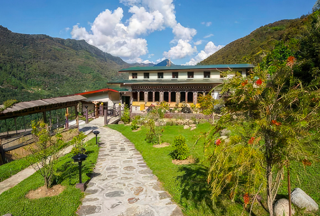Day 1 – Arrive Paro International Airport and transfer to Thimphu city. (L/D)
The most beautiful moments in life are moments when you are expressing your joy, not when you are seeking it.

Your flight into Paro is one of the most spectacular in the world. It is mesmerizing and exhilarating. So do stay awake during the descent into Paro Valley. After immigration formalities, our representative will be waiting for you at the exit to welcome you with our traditional scarf.
We will then begin our drive to Thimphu which will be around 1 hour. It’s a wonderful drive from Paro to Thimphu.
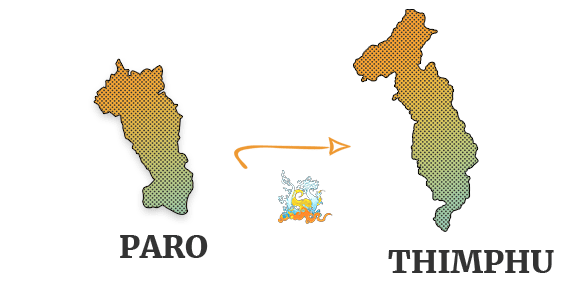
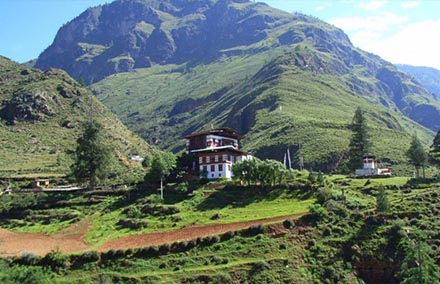
On the way you we will visit the long standing traditional 14 th Century Tachhogang Bridge. It is a very picturesque place. One can cross the bridge to the other side and take a short blissful walk. Your guide will be able to tell you all about the history of the places visiting.
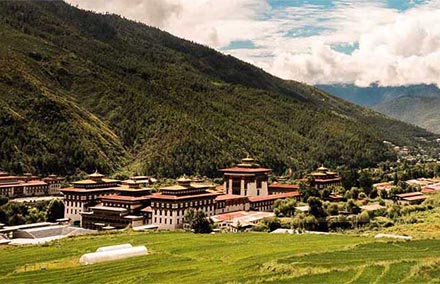
Thimphu (alt. 2400m/7875ft) – The capital town of Bhutan and the centre of government, religion and commerce, Thimphu is a unique city with unusual mixture of modern development alongside ancient traditions. Although not what one expects from a capital city, Thimphu is still a fitting and lively place. Home to civil servants, expatriates and monk body, Thimphu maintains a strong national character in its architectural style.
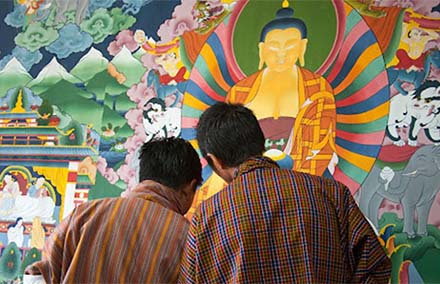
Upon arrival in Thimphu, you will have lunch at a local restaurant and after lunch you will visit Folk heritage museum. It is a living museum and studio encapsulating the cultural heritage of the Bhutanese people. It’s an enjoyable experience.
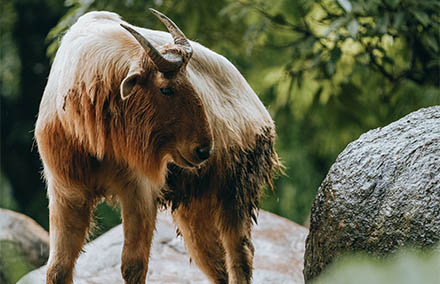
You will visit the Mini Takin Zoo to see the National Animal of Bhutan. It is a sanctuary for these animals and also they choose to stay around this area.
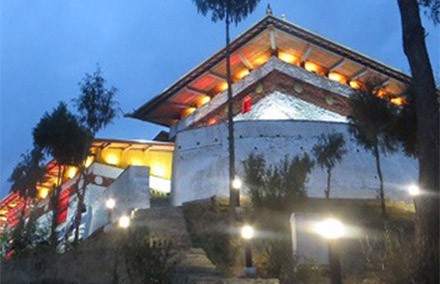
Changangkha Temple.It is a fortress like temple and monastic school perched on a ridge above Thimphu, south of Motithang. The temple was established in the 12th century. From temple courtyard, there is fascinating view of Thimphu valley. It’s a fantastic location for sights and photography.
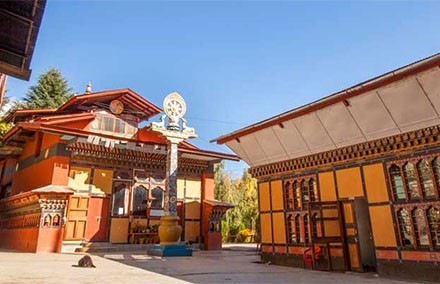
You can then visit the Zilukha Nunnery on our way back. It has a very calm and harmonious atmosphere like all temples in Bhutan. You can take a short walk around the nunnery and greet and meet the nuns. It was built in 1976 overlooking the Thimphu fortress. Currently, the nunnery is home to about 60 nuns.
Day 2 – Cheri Monastery Hike/Excursion (North of Thimphu/40 mins drive) (B/L/D)
If you choose, you can be joyful every moment of your life. It’s time you made your choice.

Breakfast at the hotel and our first visit today will be the Cheri monastery, elevation of 2600m. On the adjacent side of the hill is Cheri Monastery. One has to be little sure footed while hiking to Cheri. It takes anywhere between 45 minutes to an hour depending on the person. After crossing a smaller cantilever bridge over the Wang Chhu (river) it’s a steady climb up hill. It is believed that Zhabdrung spend 3 years in retreat at Cheri. Even to these days Cheri is one of the most popular destinations of monks going into retreat. The surrounding area of both Tango and Cheri is home to many hermitages. Cheri is often counted among one of the most sacred places in Bhutan.
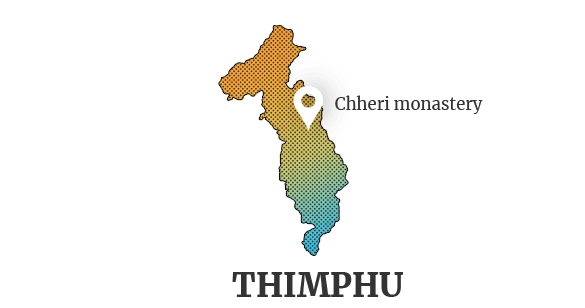
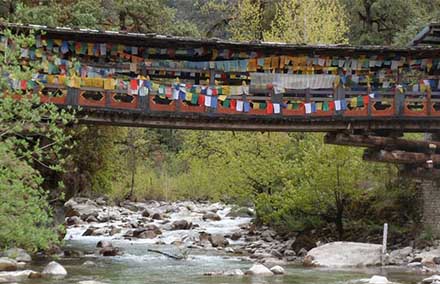
After the beautiful hike to Cheri monastery we break for lunch at a local restaurant. We then continue our sightseeing to Tashichhodzong Fortress or Dzong, also known as fortress of the glorious religion, it was initially built in 1641. We will visit this biggest magnificent architecture in Thimphu in the evening. The Dzong houses, main secretariat building which houses the throne room of His Majesty, the King of Bhutan.
Crafts Bazaar. This market offers genuine Bhutanese arts and crafts thus contributing in promotion, protection and preservation of traditional arts. You can also shop here for genuine Bhutanese souvenirs.
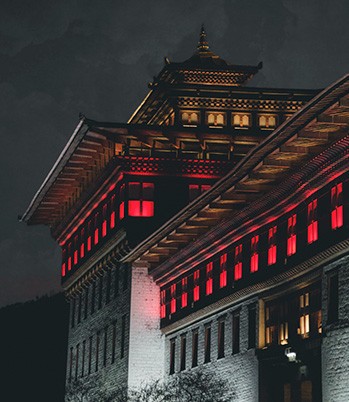
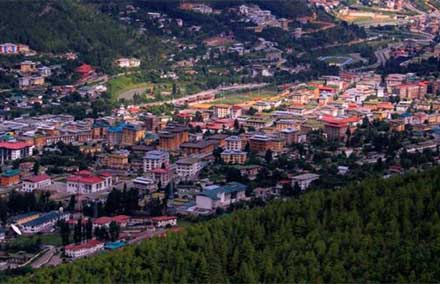
Towards the evening you can explore Thimphu town with your guide. Dinner will be planned at a local restaurant. Overnight in Thimphu.
Day 3 – Thimphu to Punakha Valley (2hrs, 30mins drive) (B/L/D)
A human being is like a seed. Either you can keep it as it is, or you can make it grow into a wonderful tree with flowers and fruits

Breakfast at the hotel and today we first visit the Buddha Statue. Located at a short drive from Thimphu city centre, you can get a good overview of the Thimphu valley from the Buddha point (Kuensel Phodrang).
You can pay your obeisance and offer prayers to the Buddha, the largest statue in the country and then walk around and take a glimpse of the valley.
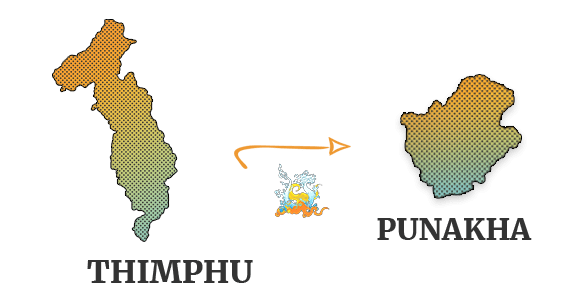
We drive to Punakha via Dochula Pass. There are splendid views of the distant Himalayas at Dochula pass (alt. 3,050m) on Thimphu to Punakha road. One can enjoy the magnificent view of the snow capped mountains while sipping your tea or coffee here at the cafeteria where we will halt.
One can explore the 108 temples built here and learn a bit of history of this site from your personal guide. Punakha (alt. 1300m/4265ft) – Punakha served as the capital of Bhutan until and still it is the winter seat of Je Khenpo (the chief abbot). Blessed with temperate climate and owing to its natural drainage from Pho Chhu (male) and Mo Chhu (female) rivers, the Punakha valley produces abundant crops and fruits.
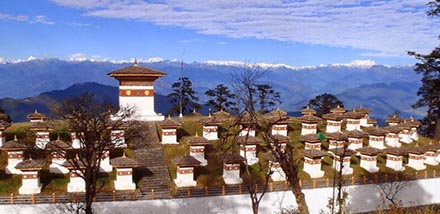
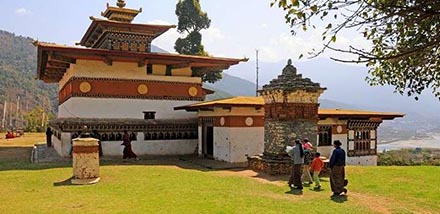
Upon arrival at Punakha Valley, we will have lunch at a local restaurant. After a good meal we visit Chimi Lhakhang, situated on a hillock in the centre of the valley, is dedicated to Lama Drukpa Kuenley, who in the late 15th century used humor, songs and outrageous behavior to dramatize his teachings and due to this also known as Divine Madman. This temple is also known as the temple of fertility. It is widely believed that couples who do not have children and wanting one, if they pray at this temple, they are usually blessed with a child very soon. It is about 30 minute walk across field from the road to the temple. The trail leads across rice fields following tiny stream downhill to a small lovely village and across more fields before making a short climb to Chimi Lhakhang.
Next, you will visit the Punakha Dzong (The Palace of Great Happiness). The most beautiful fortress in Bhutan-built strategically at the junction of Pho Chhu and Mo Chhu rivers in 1637; Punakha Dzong has played an important role in Bhutan and history.
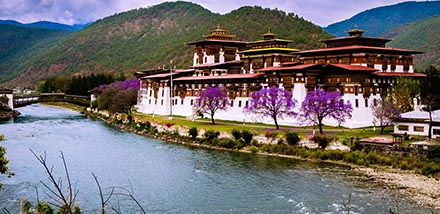
The last sightseeing for the day will be the suspension bridge of Punakha valley. One of the longest suspension bridges in Bhutan, spanning more than 250m and perched high above the very swift river of Pho Chhu River. Draped with prayer flags, the bridge connects to the other village. Enjoy the picture square views, and snap some memorable photos. You can then check into the resort and dinner will be served at the resort. Overnight in Punakha.
Day 4 – Punakha to Trongsa (5 hrs drive through Central Bhutan) (B/L/D)
To conquer oneself is a greater task than conquering others.

Breakfast at the hotel. We will be on the road most of the day but we will make short halts along the way and enjoy what the surrounding has to offer. Drive to Pelela Pass at 3390m. You will enjoy the beautiful pristine natural environment Bhutan has to offer and the stunning view of the mountains, witness the local people and their villages that come across the way. We will make occasional stops at gorgeous locations for pictures and for tea, coffee breaks and lunch break. Upon arrival we will visit biggest fortress in Bhutan – The Trongsa Dzong.
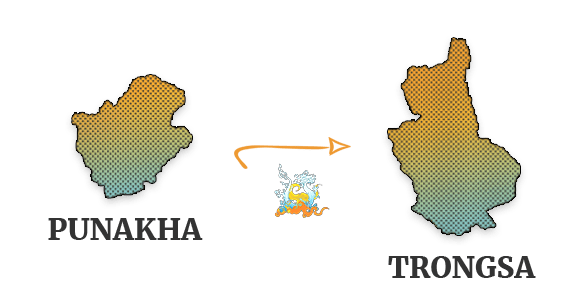
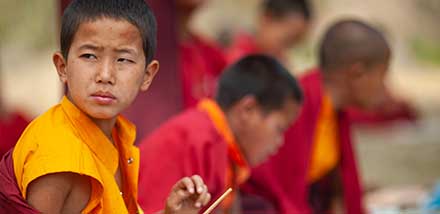
Trongsa (alt. 2,200m/7,200 ft) – forms the central hub of the nation and is historically the place from where attempts at unifying the country were launched. Both His Majesty King Ugyen Wangchuck, the Penlop of Trongsa, who was elected the country's first hereditary monarch and his successor, King Jigme Wangchuck, ruled the country from Trongsa ancient seat.
The Crown Prince of Bhutan normally holds the position of the Trongsa Penlop prior to ascending the throne; including the present King. The entire landscape around Trongsa is spectacular.
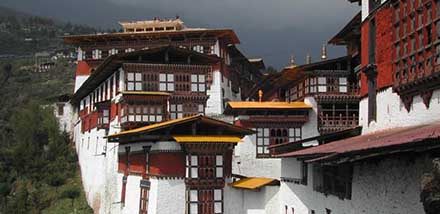
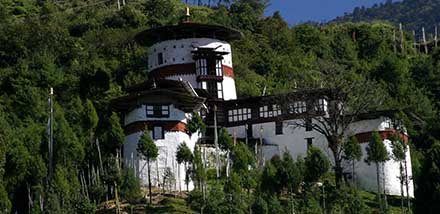
We will then check into the resort and dinner will be done at the resort. Overnight in Trongsa.
Day 5 – Trongsa to Bumthang Valley. (2hrs drive) (B/L/D)
The mind can go in a thousand directions, but on this beautiful path, I walk in peace. With each step, the wind blows. With each step, a flower blooms

Today we will drive to the beautiful Bumthang Valley from Trongsa which is approximately 2 hrs drive.
Bumthang or Jakar valley (alt. 2600m-4500m / 8530ft-14765ft). Bumthang has an individuality that charms its visitors and separates it from other regions. Comprising of four smaller valleys namely Tang, Ura, Choekhor and Chumey, the deeply spiritual region of Bumthang is shrouded in religious legend. Bumthang is also the traditional home to the great Buddhist teacher Pema Lingpa to whose descendants the present dynasty traces its origin.
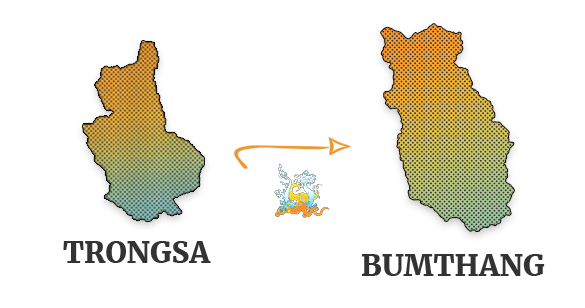
Upon arrival we will visit Tamshing Temple. Located across the river from Kurje Lhakhang, this temple was founded in 1501 by Terton Pema Lingpa, the re-incarnation of Guru Padsambhava. The monastery has very ancient religious paintings like 1,000 Buddhas and 21 Taras (female form of Buddhistava). There is a farmhouse located right next to the temple where we will have lunch with a Bhutanese family. Good food, good time.
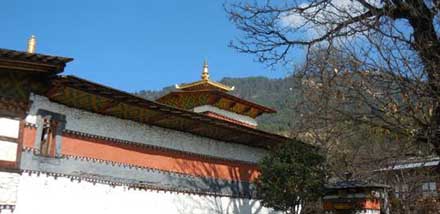
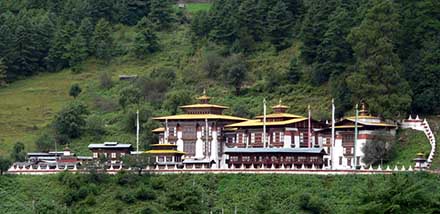
After lunch we will walk across the river through a village to visit Kurjey Temple that was built in 1652 on the rack face where Guru meditated in the 8th century.
Then we have another short beautiful walk across the fields and farms to visit Jambay Lhakhang. This monastery was built in the 7th century by Tibetan King, Songtsen Gampo. It is one of the 108 monasteries built by him to subdue evil spirits n the Himalayan region. Its present architectural appearance dates from the early 20th century. We can then check into the resort and relax and have dinner at the resort. Overnight in Bumthang.
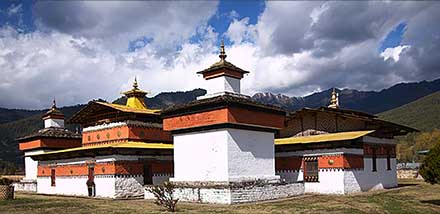
Day 6 – Exploring the Tang valley – (1hr, 30mins drive) (B/L/D)
The world is a book and those who do not travel read only one page

Today we will visit Tang Valley in Bumthang. The day will be covered with wonderful walks in the valley through the local villages. Perfect opportunities for photographs and a place to leave you to your reflection and perception.
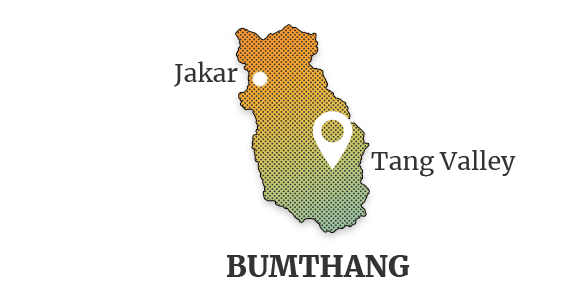
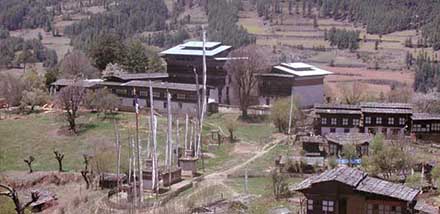
You will visit marvelous temple and Ogyencholing palace and museum. Lunch will be served at Ogyencholing palace.
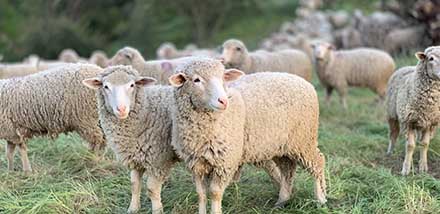
You will explore Tang valley at your own pace and completely immerse yourself in the tranquility. Tang Excursion. Terton (treasure discoverer) Pema Lingpa, the famous saint, was born in the Tang valley of Bumthang. The people of this valley raise sheep and at higher elevation, the soil in this region is not so rich for agricultural activities. From Bumthang central, it is a short drive past the Dechenpelrithang sheep farm to an unpaved road that leads to the north.

Just under a kilometer ahead, there is a rough track on the left and another kilometer ahead, there is junction where vehicle can be parked. From parking, it is a short walk down to the river. The path is lined with prayer flags and ends up above a gorge where the river forms a pool before it rushes on. Images of Pema Lingpa and his two sons are carved on a rock here.
Day 7 – Bumthang to Wangdue/ Phobjikha (6 hrs drive) (B/L/D)
The past is already gone; the future is not yet here. There’s only one moment for you to Live.

Phobjikha Valley (alt. 3000m/9845ft) is one of the most beautiful spots in Bhutan. The surprise of finding such a wide, flat valley without any trees after the hard climb through dense forests is augmented by an impression of vast space, and extremely rare experience in Bhutan where most of the valleys are tightly enclosed.
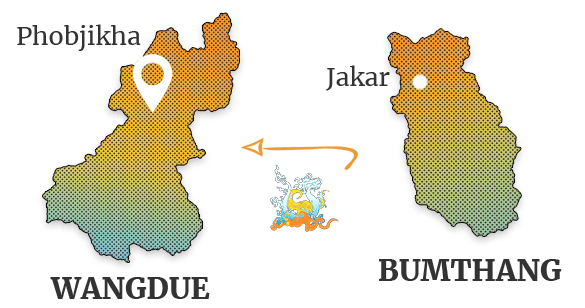
Early breakfast at the hotel today and we drive to Phobjikha valley. Today we have a road trip and we will make halts along the way for perfect photo shots, for tea breaks and lunch.
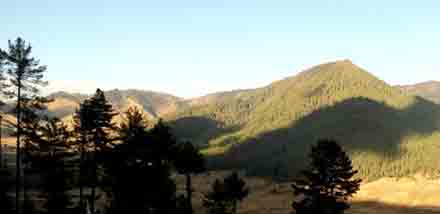
Upon arrival we visit the marvelous 15 century Khewa Lhakhang, which features three two-storey statue of the past, present and future Buddha.
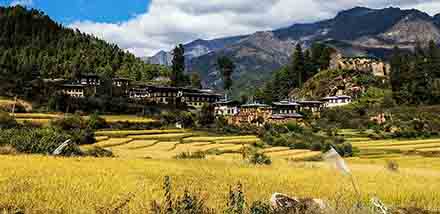
The best and the most popular short walks is the Gangtey Nature Trail. This pleasurable walk will give you a nice feel of Phobjikha valley.
From the small hilltop overlooking Gangtey Monastery, you head downhill through flower meadows to Semchubara village and from here through beautiful forests and into the open valley. At the end of the trail is a small serene temple called Khewa Temple. One can spend some time here at ease. Dinner will be served at the hotel and overnight in Phobjikha Valley. Dinner and overnight at the hotel.
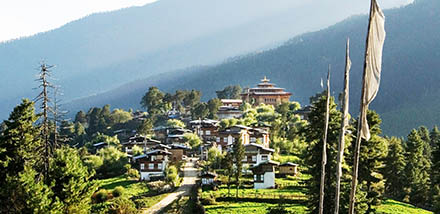
Day 8 – Phobjikha to Paro Valley (5 hrs drive to Paro) (B/L/D)
We are shaped by our thoughts; we become what we think. When the mind is pure, joy follows like a shadow that never leaves.
Breakfast at the resort and we drive to Paro via Dochula Pass. We will arrive for lunch at Paro. Before we start our long journey to Paro valley we first visit the Gangtey monastery.
The monastery is one of the main seats of the religious tradition based on Pema Lingpa’s revelations and one of the two main centers of Nyingmapa school of Buddhism in the country.
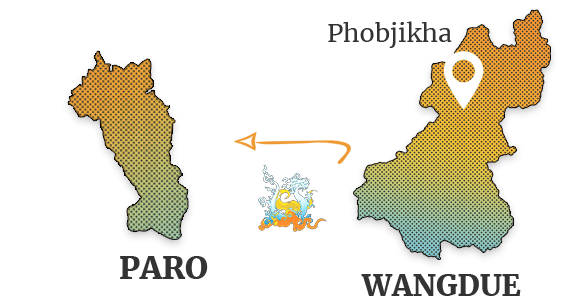
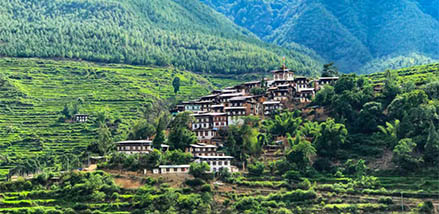
When we reach Rinchengang village, we walk through the village and see one of the early clustered settlements. Rinchengang is a small bunched village in front of the Wangdue Dzong and is famous for its proficiency in traditional means of stonework. It is about 20 minutes walk uphill with great sight of the Dzong, valley and river. Rinchengang is believed to be one of the oldest villages in Bhutan.
Paro Valley (alt. 2200m/7218ft) – The beautiful valley of Paro encapsulates within itself a rich culture, scenic beauty and hundreds of myths and legends. It is home to many of Bhutan’s oldest temples, monasteries and the National Museum. Mount. Jhomolhari (7,314m) reigns in white glory at the northern end of the valley and its glacial water plunge through deep gorges to form Pa Chhu (Paro river).
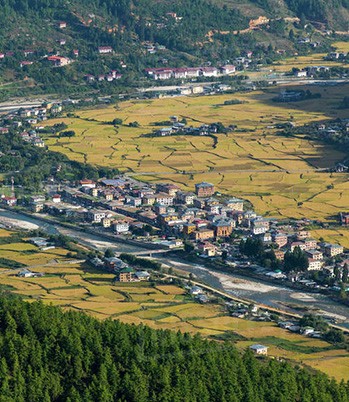
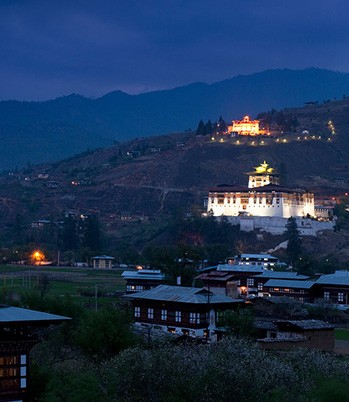
Paro is also one of the most fertile valleys in the Kingdom producing a bulk of the locally famous red rice from its terraced fields. In the late afternoon, you can explore the quaint little Paro town with your guide. Overnight at the resort in Paro Valley
Day 9 – Paro Valley Exploration (B/L/D)
Life you have led doesn’t need to be the only life you have
Breakfast will be served at the hotel. Today we continue our sightseeing and see what Paro valley has to offer us. We first visit the Kyichu Temple. It is one of the oldest and most sacred shrines of the Kingdom dating back to 7th century (the other is Jambey Lhakahng in Bumthang).
The lhakhang complex is composed of two temples. The first temple was built by Tibetan King, Songtsen Gampo in the 7th century and in 1968, H.M. Ashi Kesang, the Queen Mother of Bhutan, built the second temple in original pattern.
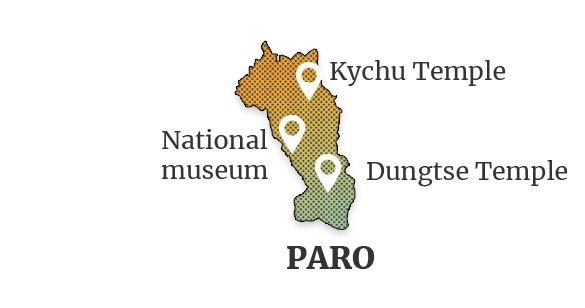
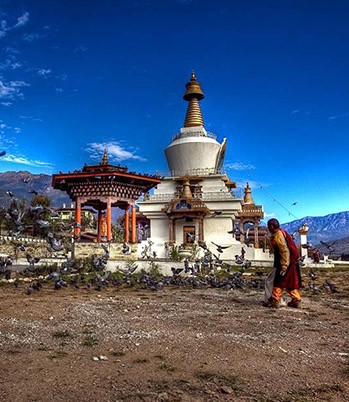
Followed by a visit to Dungtse temple, the little three storied chorten-shaped temple, was built in 1421 by Thangtong Gelpo to subdue the ogress on the top of whose head it is said to be built.
It was restored in 1841 by the 25th chief Abbot of Bhutan, Sherab Geltshen and the names of the donors can still be seen written on the wooden pillars of the ground floor.
After the sightseeing, we will break for lunch at a local restaurant. We will visit the National Musuem. One time watch tower built to defend Rinpung Dzong during inter-valley wars of the 17th century, since 1967 Ta Dzong is serving as the National Museum of the country. It holds fascinating collection of art, relics, religious thangkha paintings and Bhutan’s exquisite postage stamps. The museum circular shape augments its varied collection displayed over several floors.
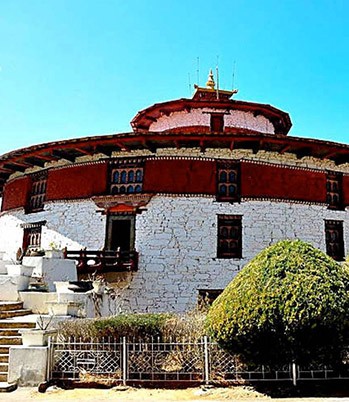
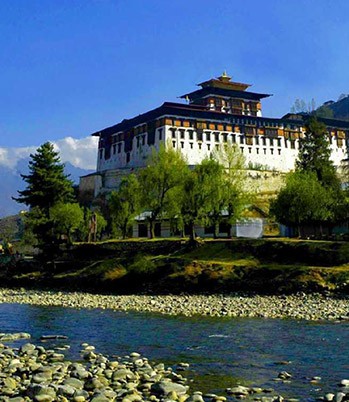
Then the Paro Fortress. Built in 1646 by Shabdrung Ngawang Namgyal, the first spiritual and temporal ruler of Bhutan, the Dzong houses the monastic body of Paro, the office of the Dzongda (district administrative head) and Thrimpon (judge) of Paro district. The approach to the Dzong is through a traditional covered bridge called Nemi Zam. A walk through the bridge, over a stone inlaid path, offers a good view of the architectural wonder of the Dzong as well as life around it. It is also the venue of Paro Tshechu, held once a year in the spring. At evening explore the small beautiful town with your guide. Dinner will be planned at a local restaurant. Overnight in Paro valley.
Day 10 – Tiger’s Nest Excursion (B/L/D)
There are only two mistakes one can make along the road to truth; not going all the way, and not starting.
Taktsang Lhakhang (alt. 3120m/10240ft) is Bhutan’s most iconic landmark and religious site. The name Taktsang translates to “The Tiger’s Nest”. This temple is one of the most holy sites in the kingdom and clings impossibly to a sheer cliff face 900 hundred meters above the Paro Valley. No trip to Bhutan would be complete without a visit to this remarkable heritage site. There is a cafeteria/ viewpoint halfway to the Tigers Nest. On the way up, you can halt for a coffee/tea break and on the way down have lunch at the same cafeteria. We will spend the most of the day hiking to the temple at your own pace while your trip leader entertains you about the history and legend of this place. It a wonderful hike and you can take unique pictures of the Tigers Nest through your lens. It will be one of your unforgettable experiences of a lifetime and a one to cherish
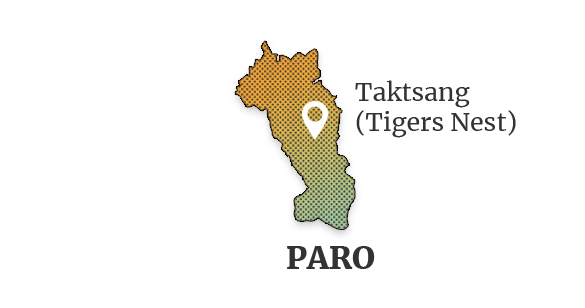
Day 11 – Departure and Farewell (B)
Traveling – it leaves you speechless, then turns you into a storyteller
Breakfast at the resort and we will leave for airport for your onward destination.
You can bid fare well to your new friends in Bhutan.
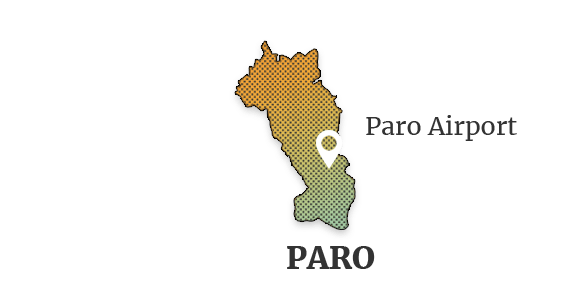
What’s Included:
- Private guided tour
- Visas for Bhutan
- Airport transfers
- Daily 3 meals (B/L/D) at designated restaurants or hotels
- Accommodation at 3 star Bhutanese boutique hotels and resorts
- A qualified & licensed English-speaking guide
- An experienced driver
- A tour vehicle
- Entry fees & road permits
- Government Sustainable development fees
- Daily refreshments
- Set of traditional costume
- Full service & assistance before, during and after your Bhutan trip
What’s Excluded:
- Flight into Bhutan via Drukair (can be arranged with us)
- Flight on other airline to catch Drukair Flight
- Meals at 5 stars restaurants
- Hotel stay outside of Bhutan
- Expenditure of personal nature
- Travel Insurance
- Gratuity for the guide and driver
- Alcoholic drink
Suitable Months:
- Whole year round
- High Season: March-May and September-November
- Low Season: December-February and June-August
Prices:
- For Travel during the months of: Dec-Feb and Jun-Aug USD 4700 or 1 person traveler
- USD 4500 per person for 2 person travelers
- USD 4200 per person for group with 3 or more
- For Travel during the months of: Mar-May and Sept-Nov USD 5000 for 1 person traveler
- USD 4800 per person for 2 person travelers
- USD 4500 per person for group of 3 and above
Our Guarantee:
Visa acceptance is guaranteed. In terms of Visa issuing, we have yet to disappoint any of our travelers. Prior to your arrival, your hotel selection will be confirmed for inspection. We only book you into hotels that you enjoy and would return to.
If you are not satisfied with our choices, we will gladly alter your guide, driver, or vehicle during the first two days of your arrival in Thimphu. Our hospitality team is there to assist you 24×7.
HOTELS IN BHUTANBHUTAN

Hotels in PARO

Hotels in thimphu

Hotels in PUNAKHA

Hotels in PHOBJIKHA VALLEY
